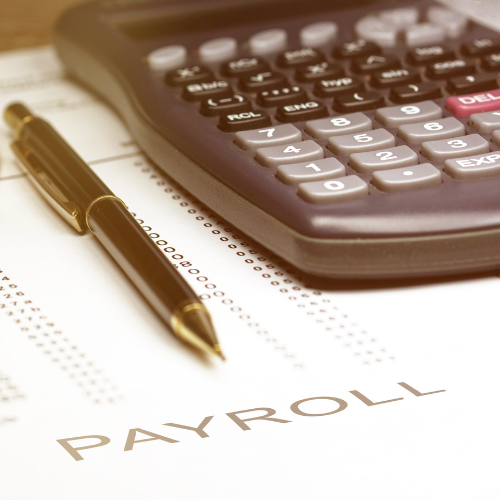Summary:
Payroll ledger templates are an invaluable resource for keeping track of all your business's financial obligations related to employee compensation packages. The template shows an organized list of the amount each employee is due for their respective pay period by tracking individual payroll items, such as taxes and overtime hours, for which deductions need to be made. The ledger helps employers remain compliant with regulations and accurately reflects the total sum owed to employees. By taking advantage of this valuable tool you can save yourself time while ensuring accuracy in all your financial records. Taking control of your business's finances with a well-maintained payroll ledger will give you peace of mind knowing that everyone on your team is being compensated appropriately according to company policy and legal standards!
Introduction:
Managing finances in a business is one of the essential elements to ensure the success of your business. And if you run a business, chances are you need to manage payroll. But keeping track of wages, deductions, and other records can be complex and time-consuming. That’s where a payroll ledger template comes in, they are critical for monitoring the money flowing in and out of your organization. A payroll ledger template is an organized way of tracking all the data associated with employee paychecks. Being able to accurately keep up with these finance-related tasks will help you make sure that your company stays afloat, and taking the necessary time to remain organized financially will be beneficial in the long run!
In this article, we will talk about everything related to a payroll ledger template. Let's get started!
- What is a payroll ledger?
- Purpose of a payroll ledger
- Benefits of using a payroll ledger template
- Creating a payroll ledger template in Google Sheets
- Understanding payroll ledger templates
- Using a payroll ledger to improve your business efficiency & bottom-line profits
- Why you should use a payroll ledger template vs. manually keeping track of your company's finances
- Using free payroll ledger templates
- Payroll software
- Payroll report
1. What is a payroll ledger?
A payroll ledger is an important document used by accountants, payroll managers, and other financial professionals to track wages received by each employee within an organization. This simple record contains the salary of each employee and any deductions set aside for taxes, insurance, social security payments, and other relevant costs associated with paying out wages. In addition to tracking individual payments, a payroll ledger allows employers to compare income and deductions across multiple employees to ensure that all appropriate laws are being adhered to. With this comprehensive system of tracking finances, organizations can effectively manage the flow of money within their institution and offer fair treatment for all individuals employed.
2. Purpose of a payroll ledger:
The primary purpose of a payroll ledger is to provide an accurate record of all payments made to employees by your company over a given period of time. This can be used in several ways including filing taxes, tracking employee performance, budgeting resources, ensuring compliance with labor laws and regulations, and even helping you identify areas where you may need to increase wages or decrease hours worked. It provides information necessary for tax preparation and company recordkeeping, and the ledger allows employers to generate reports quickly to ensure accurate payment of benefits and taxes. A payroll ledger also simplifies the administrative process when creating regular payrolls or bonus payments, enabling a more efficient method to track labor costs.
Key points:
- A payroll ledger is a tool used by businesses to track employee wages and salaries.
- The ledger can be used to calculate payroll taxes and other deductions, as well as to track employee vacation and sick days.
- The ledger can also be used to generate pay stubs and W-2 forms for employees.
- A payroll ledger is an important tool for businesses to maintain accurate financial records.
- Payroll ledgers can be maintained manually or through software programs.
3. Benefits of using a payroll ledger template:
There are many benefits to using a payroll ledger template instead of manually inputting all your data into a Google Sheet. Using templates saves you time since they do most of the work for you when it comes to calculating totals and setting up formulas - which means more time spent focusing on running your business! Now, let's dive deeper into some of the benefits of using a payroll ledger template:
- Accurate tracking and calculation of wages and taxes paid to employees:
A payroll ledger template helps to ensure accurate tracking and calculation of wages and taxes paid to employees. This ensures that every employee receives their salary on time and any tax deductions due from each paycheck. The information recorded on the payroll ledger also serves as proof in the event of a dispute between employer and employee. Additionally, employers need to be able to easily access records in case they are ever audited by the IRS or other agencies.
- Easy access to financial records in case an audit is needed:
The information contained within a payroll ledger can be used as evidence during an audit if ever needed. Having accurate financial records will help employers show that they are following IRS regulations when it comes to paying their employees correctly, which could potentially save them from expensive fines or penalties due to errors or discrepancies found during the audit process. Furthermore, having detailed financial records on hand can also help business owners prepare for any potential audits by providing them with up-to-date information about their finances.
- Ability to quickly and easily make changes as needed:
Using a payroll ledger template makes it easy for business owners to make changes as needed without worrying about making mistakes or losing important information in the process. For example, if a new hire needs to be added or removed from the ledger, it is easy enough to do so without disrupting any current data entries or calculations already made on the spreadsheet. This streamlines the process of updating employee information significantly since all changes can be made quickly and accurately without having to manually enter data each time something needs adjusting.
4. Creating a payroll ledger template in Google Sheets:
Creating a payroll ledger in Google Sheets can be a great way to store and organize important employee salary data. Before getting started, it's important to consider the individual needs of your company and employees and which pieces of information need to be included in the sheet. This can help ensure you don't miss any important details and make sure the sheet is easy to use and navigate. Once you decide what is needed, the first step in creating a payroll ledger template in Google Sheets is to set up the sheet itself. You will need to create a new sheet and name it "Payroll Ledger." Then you can proceed to set up columns with appropriate headings including date, employee names, job titles, wage rates, bonuses, deductions, overtime pay, gross pay, and net pay for each discrete period. Input the basic data for each employee into their corresponding row.
Finally, you will need to add formulas in the cells at the end of each row to calculate total wages paid out that period by multiplying hours worked by wage rate and so on through all required elements in the column. After populating all cell contents with data or formulas you can include aesthetic touches such as background colors or border styles to make the sheet easier to read and understand.
5. Understanding payroll ledger templates:
Now that we know how to create a payroll ledger template, let’s go ahead and understand how to use it. Here are the steps to follow:
- Enter the employee's personal information
- Record the total hours worked by each employee in the payroll cycle
- Calculate wages due to each employee based on their hourly rate and number of hours worked
- Determine and record taxes due to the appropriate agencies
- Update employee records with deductions for benefits, garnishments, etc.
- Generate a payroll report showing wages paid and taxes withheld from each employee
As you can see, using a payroll ledger template is fairly straightforward, but if you still have your doubts, here you can understand it better:
The employer must first enter the employee’s personal information into the system such as their name, Social Security number (SSN), date hired, hourly rate/salary rate, etc. Next, they must record the total hours worked by each employee in the current pay period and calculate any overtime hours or bonuses earned during that time frame. The employer then needs to determine and record any taxes due to federal or state agencies from the employee’s wages based on their SSN. Finally, deductions from wages such as those for benefits or garnishments should be accounted for to ensure that all employees are receiving accurate payment statements within their paycheck stubs.
6. Using a payroll ledger to improve your business efficiency & bottom line profits:
If you are looking to save time and money in your business, a payroll ledger is the way to go! Using a payroll ledger can help improve efficiency within any business by reducing manual labor associated with managing wage data inputs and outputs each month or week. With the convenience of a payroll ledger, you don't have to worry about things falling through the cracks or making costly mistakes. Additionally, having access to accurate records makes filing taxes much simpler since all the information is already laid out clearly on one document - saving both time and energy during tax season! Not only will this save valuable time but it will also help keep profits up by reducing errors and inaccuracies. And, having detailed records allows employers to accurately calculate bonuses or overtime pay based on individual performance - resulting in higher profits overall!
7. Why you should use a payroll ledger template vs. manually keeping track of your company's finances
Keeping track of a company's finances can be a daunting task, especially when done manually. This is why employing the use of payroll ledger templates has become an increasingly popular practice for managing finances. Payroll ledger templates are designed to make life easier by providing a structure that keeps thorough records of income and expenses. Transactions can be sorted automatically by date and type, making it easy to locate past transactions or generate reports. Furthermore, payroll ledger templates are highly customizable which allows businesses to tailor them specifically for their needs. Whether you opt for manual tallying or using payroll ledger templates, accurately tracking your company's finances is essential for success in any business endeavor.
8. Using free payroll ledger templates:
If you are not sure about making your own payroll ledger template and need a free template to use for your business, the internet can be a great resource. Several websites offer templates like these that can be downloaded and customized quickly and easily. All it takes is a few simple clicks and you'll have the perfect payroll ledger ready to use in no time. With so many websites now offering quality templates, it's never been easier to get the perfect template for tracking your business's payroll information. You can choose from multiple styles and formats with ease and accuracy; all you need is an internet connection!
9. Payroll software:
If making a template or using one does not sound appealing, that's alright; because payroll software is available. It can be a true lifesaver when it comes to managing a business's financial obligations to its employees. By automating and streamlining payment processing through these tools, payroll becomes much faster and more reliable. With countless features and services to choose from, payroll software can help you pay your employees more accurately and efficiently, automate tax forms and deductions, prepare accurate reports for both the employer and employee and even generate paycheck stubs. They are easy to set up and use with most designed to integrate into existing management systems, making it easier to keep records up-to-date. Whether you’re just starting a business or dealing with complicated payroll taxes, good payroll software can make all the difference. Not only will it save you time, but it helps ensure that all of your payments are taken care of accurately and on time.
10. Payroll report:
Payroll reports are must-have documents for any business, no matter the size. Payroll templates allow businesses to quickly and easily generate these crucial reports. The advantage of using payroll report templates is that they contain the necessary data fields which are already set up and organized with properly formatted tables so that all information is communicated clearly in an organized manner. This can help to ensure accuracy in both payroll calculations and your company's financial records. Utilizing a concise and comprehensive payroll report template takes care of many time-consuming details and keeps your important financial information up-to-date with ease.
Conclusion:
Using a payroll ledger template can not only save time & energy associated with manually entering & calculating data but also provide employers with detailed records that make filing taxes much easier while helping increase bottom-line profits through better bonus calculations based on individual performance metrics! It’s the go-to source to get all the information related to employee payments and obligations during a certain period. However, it's important to remember that while templates are helpful they should not be used blindly - always double-check your figures before submitting anything officially! With this done, and with the ability of a payroll ledger template to quickly make changes when necessary, business owners can rest assured knowing that their finances are always up-to-date and accurate no matter what might come up down the line. Bottom line, investing in a good quality payroll ledger template is worth considering if you want optimal control over your company’s finances!




